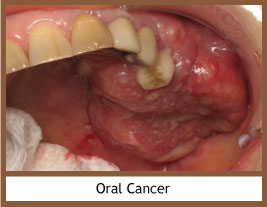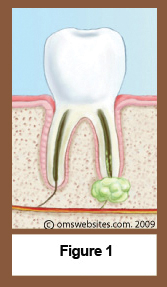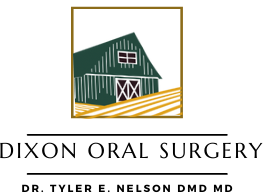Oral Surgeons receive extensive training in the diagnosis and treatment of both benign and malignant conditions that occur in the oral cavity and head and neck region.
What is Oral Pathology?
Oral and maxillofacial pathology is the specialty which deals with the identification, nature, and management of diseases affecting your mouth. Oral pathology investigates the causes, effects and processes of oral and maxillofacial diseases.
What are some of the common conditions that we treat?
- Benign cysts and tumors of the jawbones
- Benign and Malignant Salivary Gland Tumors and Conditions
- Non healing ulcerations in the oral cavity
- Bisphosphonate Related Osteonecrosis of the Jaw (BRONJ)
- Red and White lesions of the oral cavity ( Leukoplakia and Erythroplakia)
- Skin Cancer
- Melanoma
What happens if my doctor or dentist sends me to Dixon OMFS for an evaluation?

We will perform a thorough history and physical exam with a focus on the area of concern. They will evaluate the area and likely recommend a biopsy of the lesion. This biopsy may consist of removal of the entire lesion, or they may choose to take only a small part of the lesion to obtain a diagnosis depending on the size and behavior of the lesion.
We will then send the specimen to a laboratory staffed by Oral and Maxillofacial Pathologists for evaluation and diagnosis. These Oral and Maxillofacial Pathologists have received special training in diseases of the oral cavity, as well as the head and neck region. This is important because some oral lesions exhibit characteristics that are different than any other area of the body.
What are Signs of Oral and Maxillofacial Diseases?

- White and Red patches in the mouth
- Sore(s) that bleed easily or fails to heal
- Thickening or a lump on your gums inside your mouth
- Difficulty swallowing or chewing
- Constant sore throat or rasping
Should I Check for Oral Pathologies?
You should check your mouth monthly and look for changes like the ones listed above. You should never ignore suspicious sores or lumps. Contact us immediately if you notice changes in and around your mouth.
Oral and Maxillofacial Reconstruction
If you have undergone an ablative or resective procedure due to a benign or malignant lesion, you have numerous options for reconstruction. Due to their extensive training and experience in Oral and Maxillofacial Reconstruction, we can help return the function and quality of life that was lost.
Our experience allows us to design a procedure specifically to your needs. This can include both bone and soft tissue reconstruction from various areas of the body. We can also work closely with your dentist or a maxillofacial prosthodontist to provide you with a functional dental rehabilitation. We also work closely with an anaplastologist to provide implant supported nose, ear, and eye prosthetic reconstruction.
Apicoectomy
What is a Root?
Roots hold your teeth in place and extend them into your jawbone. Your front teeth usually have a single root whereas other teeth like your molars and premolars have two or more roots. Nerve and blood vessels enter your tooth through the tip of the root, known as the apex. The nerves and blood vessels travel through your root via a canal, and into the pulp chamber, which is inside the crown (the visible part of your tooth).

Why Do I Need an Apicoectomy?
When you receive root canal treatment, the canals are cleaned and all tissue that is inflamed or infected is removed. When the inflammation or infection won’t go away or develops after a root canal, an apicoectomy may be necessary to remove the infection from the surrounding bone (see Figure 1).
What is an Apicoectomy?
What Does an Apicoectomy Involve?
Infected Tissue and Tooth Tip Removed Canal is Sealed

Apicoectomies usually take 30 to 90 minutes. The length of the procedure is dependent upon the location of the tooth and the complexity of the root structure.
We will discuss the various anesthetic options you may consider during your consultations.
